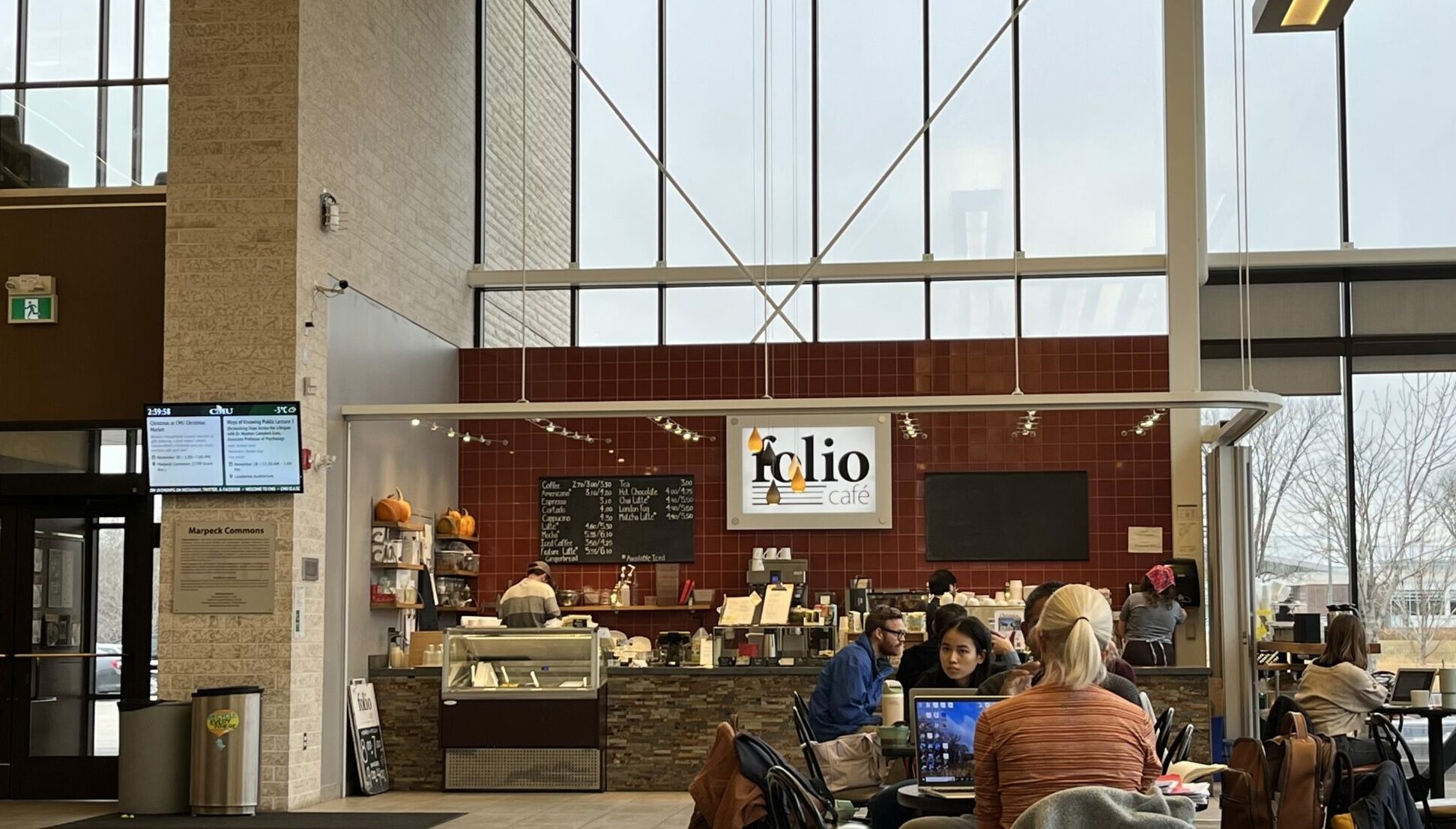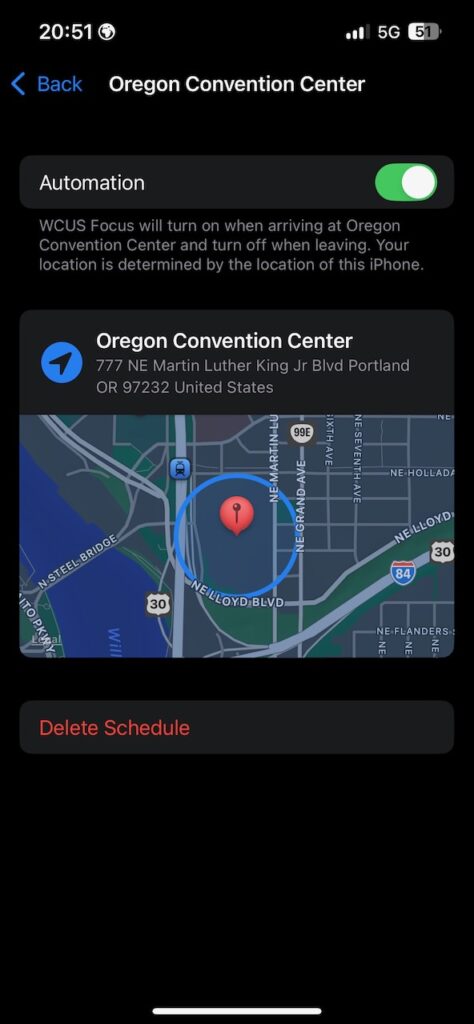This is the first post in my new “Laptop-Friendly Café Guide.”
Nestled in the library building of Canadian Mennonite University at 2299 Grant Ave. They’re open 8am – 7pm on Weekdays and 9am – 4pm on Saturdays (closed Sundays and holidays).
I’ve worked here a number of times in the past and there’s good reason so many posters on Winnipeg Reddit suggested this as a location to work from.
Vibe – 5/5
Folio Café is the type of place you’ll as likely to find an 80 year old Mennonite Grandma who uses a plastic McNally Robinson bag as a purse meeting up with her retirement age daughter; as you are students cramming in a snack between classes. Which is to say, while it is technically located on a college campus, it’s not necessarily primary patronized by college students.
The café is in the large atrium of the modern library building, which giant two story floor to ceiling windows. It must be absolutely stunning in on a nice summer evening or a little earlier in the fall when the leaves in the adjacent Assiniboine Forest.
It’s a cool space. Good vibes.

Coffee – 3/5
The coffee is promising but leaves room for improvement.
The brew (and sell) Little Sister beans — I like Little Sister and intend to visit them later on this series. While their menu covers all the standard coffee drinks plus seasonal specials, some technical execution issues hold them back.
Case in point: my cortado was at least a 1:2 espresso-to-milk ratio, if not verging on flat white territory. For cortado purists (myself included) who prefer the traditional 1:1 ratio, this might be a slight disappointment.
Food – 5/5
The food offering is where Folio truly shines. Their pastry case, still well-stocked at 1:30 PM (a rare sight in Winnipeg), features treats from the exceptional Hildegard’s Bakery. The apple chai scone I sampled lived up to Hildegard’s sterling reputation.
Beyond pastries, they offer a variety of sandwiches and delicious smelling soups. But perhaps their secret weapon is their impressive gelato selection — possibly one of the city’s finest, though I’ll need more research to make that definitive claim.
Seating – 4/5
There’s a tonne of seating here! I had no trouble finding a spot despite a number of tables being occupied by students working on homework or seniors on longer coffee visits.
The seating loses points on account of:
- The bar-height tables facing the windows suffer from mismatched chair heights, making them uncomfortable for laptop work.
- Most tables are large rounds designed for 4+ people, which can make solo seating awkward during busy periods, thought I did not experience this during my visit.
Honourable mention goes out to the comfy study chairs on the second floor balcony. They were occupied by students, so I did not get to try them out.
Location – 3/5
I wanted to give this location a 5/5.
It’s in one of the most picturesque parts of the city, right next to Assiniboine Forest and near the park. It’s well connected to the bike network and relatively straightforward to bus to. It’s also very convenient for me to get to.
However, its position in west Winnipeg means it’s a substantial 30-minute drive from many parts of the city.
The parking situation also poses challenges: the lot has a strict 2-hour limit, and the nearest street parking requires a 10-15 minute walk.
Overall – 20/25
Folio Café’s popularity among Winnipeg Reddit’s remote workers is well-earned.
The college atmosphere is super conducive to working remotely. And the fact that it’s used by the general public means you’re not going to feel out of place spending time there as a non-student.
Combined with exceptional food options and ample seating, it’s a solid choice for remote work—especially if you’re in anywhere west of Route 90.
Additional Note: CMU is affiliated with Mennonite Church Canada and the Mennonite Brethren Church of Manitoba, you may have preconceived notions about what a religious affiliation implies, but the campus–and Folio Café in particular–maintains an inclusive, welcoming atmosphere. During my visit, I noticed the café proudly displayed a trans flag at the bar, reflecting their commitment to creating a space where everyone feels welcome.




